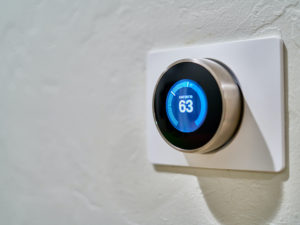Properly Dispose of Refrigerants
A refrigerant is a compound, typically in a fluid or gaseous state, that absorbs heat from the environment and transfers to another area as refrigeration or air conditioning. It’s found in pretty much everything that cools, and sometimes in things that heat, most commonly air conditioners, fridges, freezers, and vehicle air conditioners.
The demand for air conditioning and refrigeration, thus refrigerants, are increasing as the world warms, particularly in Duluth where some residents are purchasing air conditioning systems for the first time due to increasingly warm summers.
If you have any appliances that use refrigerants, it is imperative that you properly dispose of them. Refrigerants are often chlorofluorocarbons (CFC), which are largely responsible for the hole in the ozone layer, and nearly always have high global warming potential. For example R12, a common refrigerant is a CFC.
PROPERLY DISPOSE OF REFRIGERANTS
Government regulations are very strict on what you can and can’t do with used refrigerants. The guidelines are set up to avoid the damaging effects refrigerants can have on the atmosphere.
In general, if the refrigerant is not contaminated it can be recycled and reused. You can typically take the non contaminated refrigerant back to the wholesaler for exchange. If the refrigerant is contaminated, you’ll need to send it to a reclamation facility. At the reclamation facility they’ll separate the refrigerant into the individual component refrigerants or incinerate it in accordance with EPA guidelines. It’s important to make sure that during service, contractors and technicians capture all of the refrigerant so it is not released into the atmosphere.
The environmental impact of refrigerants can be either direct or indirect. The direct impact is that the leakage of refrigerant gases into the atmosphere which can cause ozone depletion and contribute to global warming. The indirect impact is that refrigeration and air conditioning systems consume energy, which raise s CO2 emissions and contributes to global warming.
There are many ways to reduce your environmental impact.
REDUCE DIRECT IMPACT:
- Use a refrigerant gas with lower environmental impact: Look to use a refrigerant gas with zero ozone depletion potential (ODP) and low global warming potential (GWP).
- Lower the leak rates of your system: Refrigerants only create direct emissions when they leak to atmosphere. Ensure that your system is leak-tight, consider fitting leak-detection systems and follow a regular maintenance schedule.
- Ensure correct end-of-life treatment of refrigerant gases: Ensure that you recover and dispose of refrigerant gas correctly when maintaining, upgrading or decommissioning a system.
REDUCE INDIRECT EMISSIONS:
- Minimize the power consumption of your refrigeration or air conditioning system: For existing systems, ensure that you are regularly maintaining the system and using the correct refrigerant gas. Installing new systems may offer substantial energy savings, via modern technology using next generation refrigerants, including HFOs and natural refrigerants.
- Use your refrigeration or air conditioning system less often: Improve insulation, install doors on commercial refrigerators, freezers and display cases, and change the temperature set-points for air conditioning.
Learn more about common refrigerants here.
Learn more about the environmental impact of refrigerants here.
Learn more about proper disposal of refrigerants here.
Did you take this action? Report it!
Help us show our collective community impact by reporting that you took this action.
Never miss a thing!
Sign up for our email list to stay updated on the latest Eco3 news!


